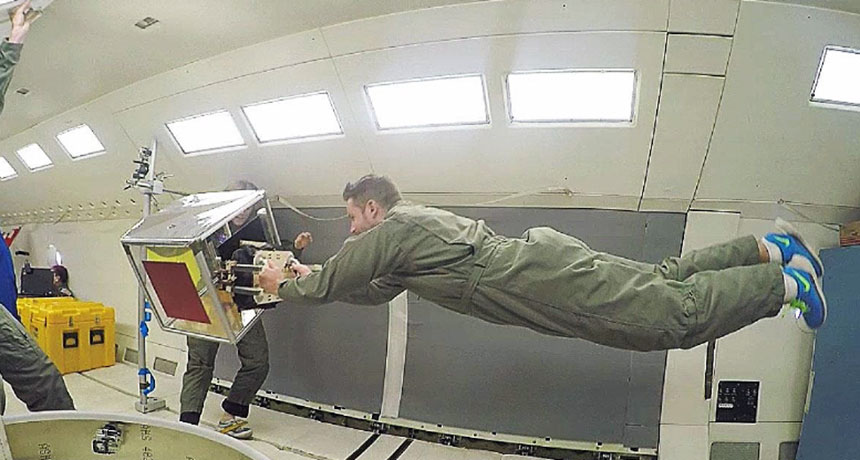arc A curve, often mapping out what appears to be part of a circle.
astronaut Someone trained to travel into space for research and exploration.
chemical A substance formed from two or more atoms that unite (bond) in a fixed proportion and structure. For example, water is a chemical made when two hydrogen atoms bond to one oxygen atom. Its chemical formula is H2O.
colleague Someone who works with another; a co-worker or team member.
force Some outside influence that can change the motion of a body, hold bodies close to one another, or produce motion or stress in a stationary body.
gecko A small to medium sized reptile found in warm to equatorial regions of the world. Some 2,000 different species of this lizard exist, in a wide range of colors. These reptiles eat insects, worms and even the occasional small bird. But they are best known for being able to climb slick surfaces, owing to special structures on the bottom surfaces of their feet.
glue A sticky substance that attaches one material to another.
gravity The force that attracts anything with mass, or bulk, toward any other thing with mass. The more mass that something has, the greater its gravity.
lizard A type of reptile that typically walks on four legs, has a scaly body and a long tapering tail. Unlike most reptiles, lizards also typically have movable eyelids. Examples of lizards include the tuatara, chameleons, Komodo dragon, and Gila monster.
molecule An electrically neutral group of atoms that represents the smallest possible amount of a chemical compound. Molecules can be made of single types of atoms or of different types. For example, the oxygen in the air is made of two oxygen atoms (O2), but water is made of two hydrogen atoms and one oxygen atom (H2O).
NASA Short for the National Aeronautics and Space Administration. Created in 1958, this U.S. agency has become a leader in space research and in stimulating public interest in space exploration. It was through NASA that the United States sent people into orbit and ultimately to the moon. It also has sent research craft to study planets and other celestial objects in our solar system.
planet A celestial object that orbits a star, is big enough for gravity to have squashed it into a roundish ball and has cleared other objects out of the way in its orbital neighborhood.
propulsion The act or process of driving something forward, using a force. For instance, jet engines are one source of propulsion used for keeping airplanes aloft.
robot A machine that can sense its environment, process information and respond with specific actions. Some robots can act without any human input, while others are guided by a human.
rocket Something propelled into the air or through space, sometimes as a weapon of war. A rocket usually is lofted by the release of exhaust gases as some fuel burns. (v.) Something that flings into space at high speed as if fueled by combustion.
satellite A moon orbiting a planet or a vehicle or other manufactured object that orbits some celestial body in space.
tool An object that a person or other animal makes or obtains and then uses to carry out some purpose such as reaching food, defending itself or grooming.
vacuum Space with little or no matter in it. Laboratories or manufacturing plants may use vacuum equipment to pump out air, creating an area known as a vacuum chamber.
van der Waals forces A type of molecular attraction that works over very small distances.








